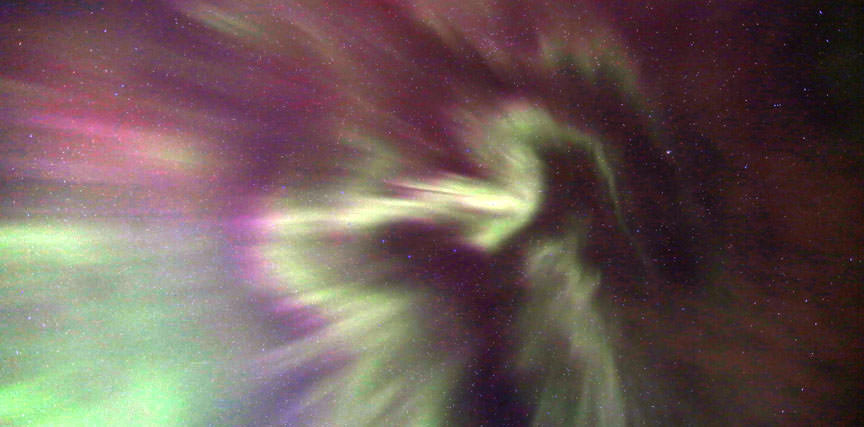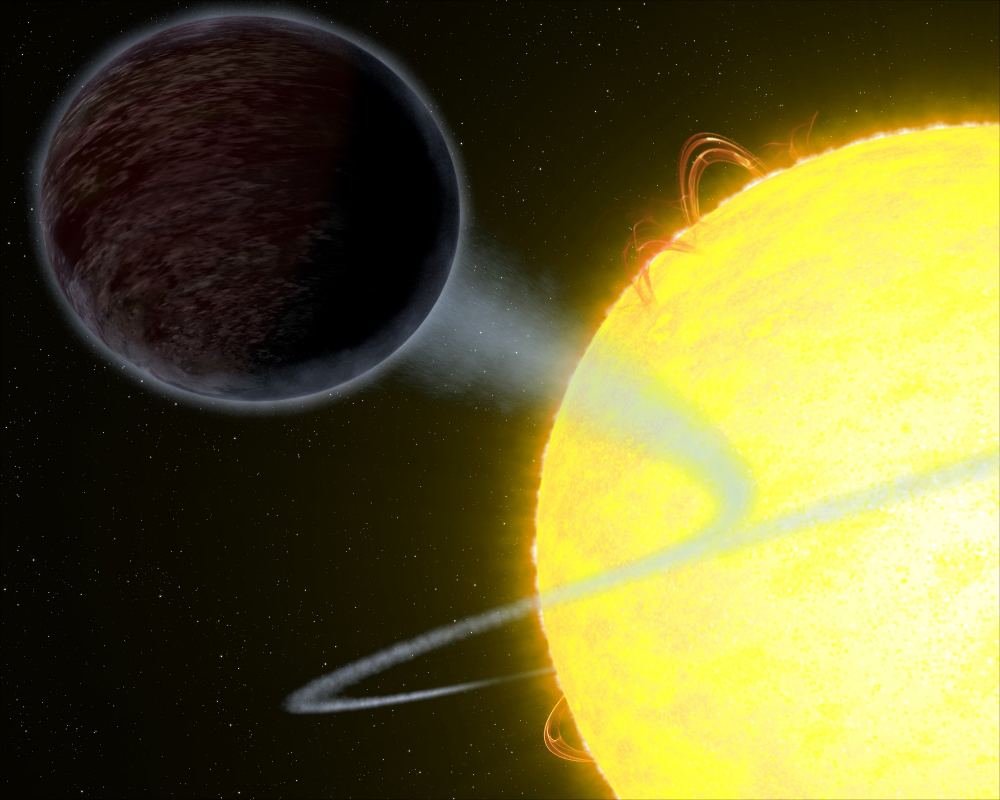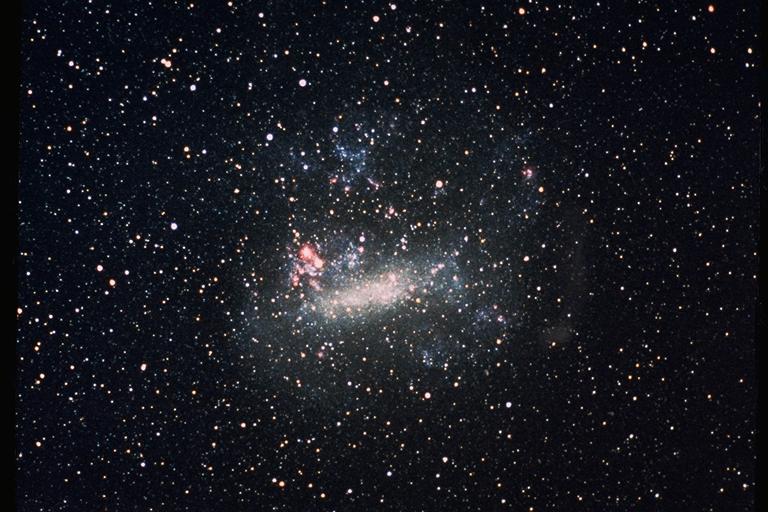In February 2022, SpaceX and entrepreneur/philanthropist Jared Isaacman (commander of the Inspiration4 mission) announced they were launching a new program to “rapidly advance human spaceflight capabilities” while supporting important charitable and humanitarian causes here on Earth. It’s called the Polaris Program. In a recent press release, SpaceX revealed the spacesuits its Polaris astronauts will be wearing (up top) and described the research crews will conduct during the program’s three human spaceflight missions – the first of which is scheduled to launch this summer!
Continue reading “SpaceX Shows Off Its New Extravehicular Activity Suit”Do Clashing Galaxies Create Odd Radio Circles?

Within the last five years, astronomers have discovered a new type of astronomical phenomenon that exists on vast scales – larger than whole galaxies. They’re called ORCs (odd radio circles), and they look like giant rings of radio waves expanding outwards like a shockwave. Until now, ORCs had never been observed in any wavelength other than radio, but according to a new paper released on April 30 2024, astronomers have captured X-rays associated with an ORC for the first time.
Continue reading “Do Clashing Galaxies Create Odd Radio Circles?”Supermassive Black Holes Got Started From Massive Cosmic Seeds

Supermassive black holes are central to the dynamics and evolution of galaxies. They play a role in galactic formation, stellar production, and possibly even the clustering of dark matter. Almost every galaxy has a supermassive black hole, which can make up a small fraction of a galaxy’s mass in nearby galaxies. While we know a great deal about these gravitational monsters, one question that has lingered is just how supermassive black holes gained mass so quickly.
Continue reading “Supermassive Black Holes Got Started From Massive Cosmic Seeds”If You’ve Never Seen An Aurora Before, This Might Be Your Chance!

Tonight and the rest of the weekend could be your best chance ever to see the aurora.
The Sun has been extremely active lately as it heads towards solar maximum. A giant Earth-facing sunspot group named AR3664 has been visible, and according to Spaceweather.com, the first of an unbelievable SIX coronal mass ejections were hurled our way from that active region, and is now hitting our planet’s magnetic field.
Solar experts predict that people in the US as far south as Alabama and Northern California could be treated to seeing the northern lights during this weekend. For those of you in northern Europe, you could also be in for some aurora excitement. Check the Space Weather Prediction Center’s 30-minute Aurora Forecast for the latest information.
If the weather conditions are right in your area, you might hit the aurora jackpot. See a map with predictions, below.
Continue reading “If You’ve Never Seen An Aurora Before, This Might Be Your Chance!”Lighting Up the Moon’s Permanently Shadowed Craters

The Moon’s polar regions are home to permanently shadowed craters. In those craters is ancient ice, and establishing a presence on the Moon means those water ice deposits are a valuable resource. Astronauts will likely use solar energy to work in these craters and harvest water, but the Sun never shines there.
What’s the solution? According to one team of researchers, a solar collector perched on the crater’s rim.
Continue reading “Lighting Up the Moon’s Permanently Shadowed Craters”Here’s Where China’s Sample Return Mission is Headed

Humanity got its first look at the other side of the Moon in 1959 when the USSR’s Luna 3 probe captured our first images of the Lunar far side. The pictures were shocking, pointing out a pronounced difference between the Moon’s different sides. Now China is sending another lander to the far side.
This time, it’ll bring back a sample from this long-unseen domain that could explain the puzzling difference.
Continue reading “Here’s Where China’s Sample Return Mission is Headed”Why Hot Jupiters Spiral into Their Stars

Exoplanets are a fascinating astronomy topic, especially the so-called “Hot Jupiters”. They’re overheated massive worlds often found orbiting very close to their stars—hence the name. Extreme gravitational interactions can tug them right into their stars over millions of years. However, some hot Jupiters appear to be spiraling in faster than gravity can explain.
Continue reading “Why Hot Jupiters Spiral into Their Stars”Does the Milky Way Have Too Many Satellite Galaxies?
The Large and Small Magellanic Clouds are well known satellite galaxies of the Milky Way but there are more. It is surrounded by at least 61 within 1.4 million light years (for context the Andromeda Galaxy is 2.5 million light years away) but there are likely to be more. A team of astronomers have been hunting for more companions using the Subaru telescope and so far, have searched just 3% of the sky. To everyone’s surprise they have found nine previously undiscovered satellite galaxies, far more than expected.
Continue reading “Does the Milky Way Have Too Many Satellite Galaxies?”Astronomers are on the Hunt for Dyson Spheres

There’s something poetic about humanity’s attempt to detect other civilizations somewhere in the Milky Way’s expanse. There’s also something futile about it. But we’re not going to stop. There’s little doubt about that.
One group of scientists thinks that we may already have detected technosignatures from a technological civilization’s Dyson Spheres, but the detection is hidden in our vast troves of astronomical data.
Continue reading “Astronomers are on the Hunt for Dyson Spheres”We Need to Consider Conservation Efforts on Mars

Astrobiology is the field of science that studies the origins, evolution, distribution, and future of life in the Universe. In practice, this means sending robotic missions beyond Earth to analyze the atmospheres, surfaces, and chemistry of extraterrestrial worlds. At present, all of our astrobiology missions are focused on Mars, as it is considered the most Earth-like environment beyond our planet. While several missions will be destined for the outer Solar System to investigate “Ocean Worlds” for evidence of life (Europa, Ganymede, Titan, and Enceladus), our efforts to find life beyond Earth will remain predominantly on Mars.
If and when these efforts succeed, it will have drastic implications for future missions to Mars. Not only will great care need to be taken to protect Martian life from contamination by Earth organisms, but precautions must be taken to prevent the same from happening to Earth (aka. Planetary Protection). In a recent study, a team from the University of New South Wales (UNSW) in Sydney, Australia, recommends that legal or normative frameworks be adopted now to ensure that future missions do not threaten sites where evidence of life (past or present) might be found.
Continue reading “We Need to Consider Conservation Efforts on Mars”

